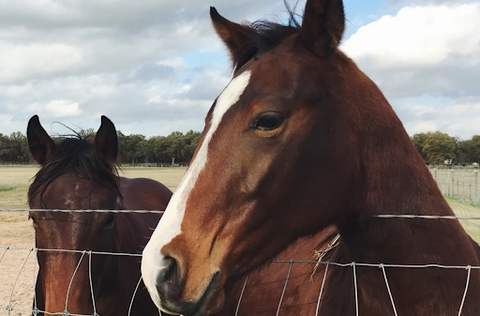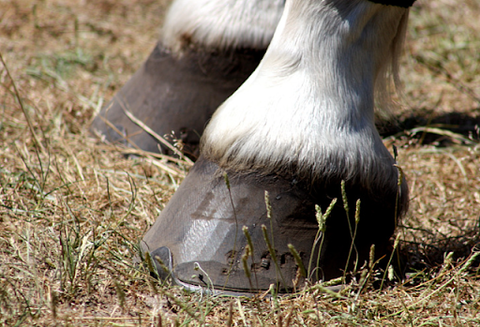Understanding Laminitis in Horses: Causes, Symptoms, and Treatment Strategies

Laminitis, a condition affecting the feet of equines, leads to significant discomfort and possible lameness. This multifaceted disease is characterized by the inflammation of the laminae—delicate tissues in the hoof that link the pedal bone to the hoof wall. For horse owners and caretakers, grasping the causes, recognizing the symptoms, and knowing the treatment avenues for laminar injury are essential in effectively managing and averting the severe outcomes of this condition.
Causes of Laminar Injury
Laminar injury can be triggered by various factors, often involving metabolic, mechanical, or inflammatory issues. Some common causes include:
- Excessive carbohydrate intake: Overconsumption of grains or access to lush pasture can lead to carbohydrate overload, causing a metabolic disturbance that triggers laminitis.
- Insulin resistance: Horses with metabolic conditions such as Equine Metabolic Syndrome (EMS) are at a higher risk due to their body's reduced ability to process insulin, leading to inflammation.
- Systemic infections: Infections that release toxins into the bloodstream, such as a retained placenta in broodmares, can cause widespread inflammation, including in the laminae.
- Excessive weight-bearing: An injury to one leg that leads a horse to overcompensate by putting more weight on the opposite leg can cause stress and inflammation in the laminae.
- Corticosteroid medications: While not universally accepted, evidence suggests that excessive or inappropriate use of corticosteroids can increase the risk of laminitis in susceptible horses.
Recognizing Symptoms
Early detection of laminar injury is critical to preventing irreversible damage. Some signs of laminitis include:
- Lameness, especially when moving on hard surfaces or turning in tight circles.
- A noticeable change in stance, with the horse leaning back to relieve pressure on the front feet (common in front-limb laminitis).
- Heat in the hooves and increased digital pulse, indicating inflammation.
- Pain in the hoof area, noticeable when pressure is applied.

Diagnosing laminar injury involves a thorough examination by a veterinarian, who may use hoof testers, radiographs (X-rays), and blood tests to assess the severity of the condition and rule out other causes of lameness. Treatment addresses the underlying cause, relieves pain, reduces inflammation, and supports hoof health. An equine with a history of laminitis may benefit from a veterinarian-endorsed, completely natural supplement such as Horse Heiro. Crafted from high-quality, top-rated natural herbs, this supplement is designed to safely and naturally address elevated insulin levels, offering a potential pathway to improved well-being. Its excellent combination and concentrations of organics make horses more comfortable and help them get back on grass pasture.
Immediate Care
- Stall rest: Keeping the horse in a deeply bedded stall helps minimize movement and reduce stress on the laminae.
- Cold therapy: Applying ice or cold water to the hooves can help reduce inflammation and pain in the acute phase.
- Pain management: Non-steroidal anti-inflammatory drugs (NSAIDs) like Equioxx can help manage pain and inflammation but must be used with caution under veterinary guidance.
Long-term Management
- Corrective shoeing: A farrier can apply special shoes or trimming techniques to redistribute weight and relieve pressure on the affected areas of the hoof.
- Dietary adjustments: Reducing carbohydrate intake and managing body weight through a balanced diet can help control insulin resistance and reduce the risk of laminitis in susceptible horses.
- Exercise: Once the acute phase is managed, controlled exercise can help improve circulation and hoof health.
Prevention is Key

Preventing laminar injury involves a holistic approach to horse care, focusing on diet management, regular exercise, and routine hoof care. Monitoring horses at risk, such as those with metabolic disorders, and adjusting their management accordingly can help reduce the chances of developing this painful condition.
The Role of the Horse Community
Awareness and education within the equine community are vital for preventing laminar injury. Sharing knowledge about the signs, risks, and management strategies can help horse owners identify and address laminitis before it leads to severe lameness or requires euthanasia.
Laminar damage in horses is a severe issue that requires quick and effective action to prevent lasting harm. It's essential to comprehend the causes, recognize the signs, and implement the proper treatment and prevention measures for horses at risk of or afflicted with laminitis. With proper management, controlling this disorder and ensuring the well-being and joy of our equine companions is achievable. Equine Medical and Surgical Associates is dedicated to maintaining your horse's optimal health. To learn more about our available products to aid in your equine wellness, please visit our website or contact us today!

